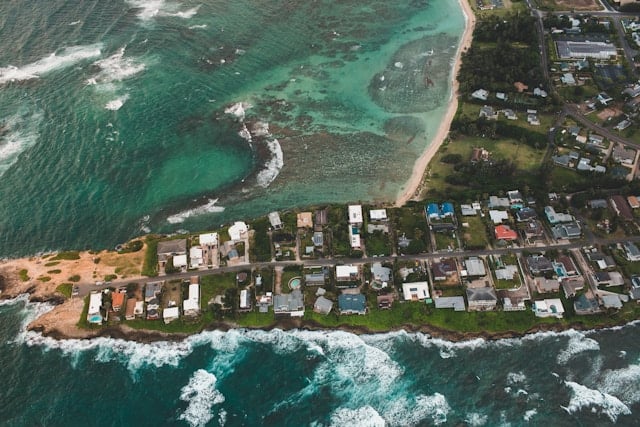Travelers to Hawaii faced major disruptions on July 29, 2025, after a powerful 8.8-magnitude earthquake off Russia’s coast triggered a Pacific-wide Tsunami Warning. Airlines, including Alaska Airlines and Hawaiian Airlines, suspended all flights to and from Hawaii to protect passengers and crews. By the morning of July 30, most flights had resumed, but delays and some disruptions continued as operations slowly returned to normal.
The tsunami warning affected not only Hawaii but also Japan, Alaska, and the U.S. West Coast. Alaska Airlines and Hawaiian Airlines quickly stopped all flights to Hawaii, impacting airports in Oahu, Maui, Kona, Kauai, and Hilo. Flights already in the air were diverted back to the mainland or rerouted to safer locations. Kona and Hilo airports closed completely, while Maui’s Kahului Airport sheltered about 200 people overnight. Honolulu International Airport stayed open for emergencies but saw many delays and diversions.

Water levels rose over four feet in Haleiwa, Oahu, and dropped 15 feet at Kahului Harbor, Maui, as water pulled away before the wave. Flooding hit low-lying areas near Hilo Seaside Hotel, but no major damage was reported. After several hours, officials downgraded the tsunami warning to an advisory, allowing airports to reopen and flights to restart.
Both Hawaiian Airlines and Alaska Airlines offered flexible travel waivers for all affected flights between July 29 and 30. Passengers could reschedule at no extra cost if they rebooked by July 29 and traveled by August 3. Unused tickets could be kept as credit for future travel for up to a year. Travelers were urged to check flight status before heading to the airport and to follow updates from airlines and the National Weather Service, which provides official tsunami alerts at tsunami.gov.
Hawaii Governor Josh Green said, “While no catastrophic wave struck, the receding water and exposed boats in Oahu were cause for concern.” He stressed the need to follow evacuation orders and safety rules. Hawaiian Airlines’ spokesperson Alex Da Silva confirmed that flights resumed as soon as airports reopened and reminded travelers to check their flight status. Alaska Airlines also shared updates about ongoing monitoring and the flexible waiver policy.
The sudden suspension caused widespread cancellations and delays for all major routes between the U.S. mainland and Hawaii. Many passengers were stranded, especially in Maui and Hilo, and connecting flights were disrupted. Airlines are still working through the backlog, and some delays may continue for another day or two.
Hawaii has strong protocols for tsunami warnings, including airport closures and coordinated responses between airlines and state agencies. The quick suspension and restart of flights showed the effectiveness of these emergency plans. Aviation experts praised the fast action, saying it likely saved lives. Travel industry analysts noted the financial impact but said flexible policies helped reduce long-term problems.
Powerful 8.8-magnitude earthquake triggers tsunami warning
Airlines suspend all flights to and from Hawaii
Most flights resume, but delays continue
Tsunami warning downgraded to advisory
Deadline for rebooking under flexible travel waivers
Travelers should stay flexible, keep checking official updates, and use available waivers and support services. For more information on Hawaii’s emergency management, visit the Hawaii Emergency Management Agency. According to analysis by VisaVerge.com, the response to this event highlights the importance of clear communication and strong safety protocols for travelers and airlines alike.
Learn Today
Tsunami Warning → An alert issued to warn of possible large sea waves caused by underwater earthquakes or eruptions.
Flexible Travel Waivers → Policies allowing passengers to change or cancel flights without extra fees during emergencies.
Pacific-wide → A situation affecting countries and regions across the entire Pacific Ocean area.
Flight Suspension → Temporary halting of flights to ensure safety during emergencies or operational issues.
Evacuation Orders → Official instructions for people to leave a dangerous area immediately for safety reasons.
This Article in a Nutshell
On July 29, 2025, an 8.8 magnitude quake off Russia sparked a Pacific tsunami warning, halting Hawaii flights. Airports closed temporarily as water levels fluctuated. Airlines quickly suspended services, then resumed by July 30 with delays. Hawaii’s emergency protocols ensured safety, demonstrating effective responses amid natural disasters and travel disruptions.
— By VisaVerge.com













